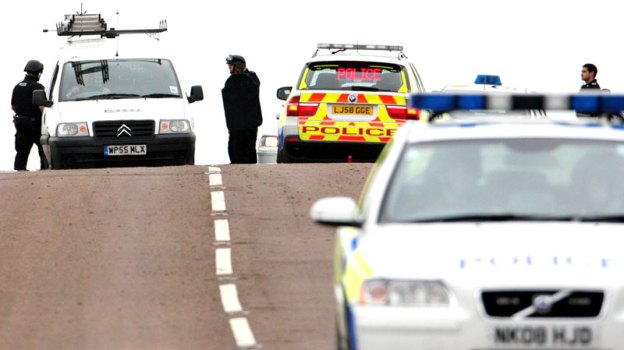 When a major car collision occurs in the United Kingdom, the police investigators are obviously sent to the scene to record all details of the crash. This process requires an extensive amount of time in order to record all details for upcoming court proceedings and insurance purposes. The accident scene must stay untouched during the investigation, thus the cost of delaying commerce becomes extremely high. The process can easily take many hours to document with written notes and photographs. The UK government estimates there were over 18,000 partial or complete road closures during 2010 that amounted to 20,000 hours at a cost of a bit more than $80,000 an hour.
When a major car collision occurs in the United Kingdom, the police investigators are obviously sent to the scene to record all details of the crash. This process requires an extensive amount of time in order to record all details for upcoming court proceedings and insurance purposes. The accident scene must stay untouched during the investigation, thus the cost of delaying commerce becomes extremely high. The process can easily take many hours to document with written notes and photographs. The UK government estimates there were over 18,000 partial or complete road closures during 2010 that amounted to 20,000 hours at a cost of a bit more than $80,000 an hour.
Since reducing the amount of time that it takes police officials to document the crash site is instrumental in reducing costs, the UK government purchased twenty laser scanners with 3D modeling capabilities according to the BBC. The scanner is deployed at the crash site and rotates 360 degrees on a tripod as it records over 30 million data points. Each complete scan takes 4 minutes and police usually take four to five scans of each accident site. Once the digital image of the crash site is complied with the data from the scanner, investigators use the digital measurements to determine the initial cause of the crash using impact points on the wrecked vehicles, skid marks on the pavement and other data.
While the police officials still have to record evidence at the scene, this time-saving tool reduces the amount of time that a road stays closed drastically. Investigators can finish up in a fraction of the time with more accurate readings than taking measurements by hand. This technology hasn’t caught on in the United States yet, at least not with police officials. Only private accident reconstruction firms in the United States are using them to laser scan wrecked vehicles.
Editors' Recommendations
- Los Angeles-based Czinger is 3D-printing a 1,232-hp hybrid hypercar
- This 3D-printed electric car could be sketchiest Kickstarter yet
- Volkswagen and HP want your next car to have 3D-printed parts


